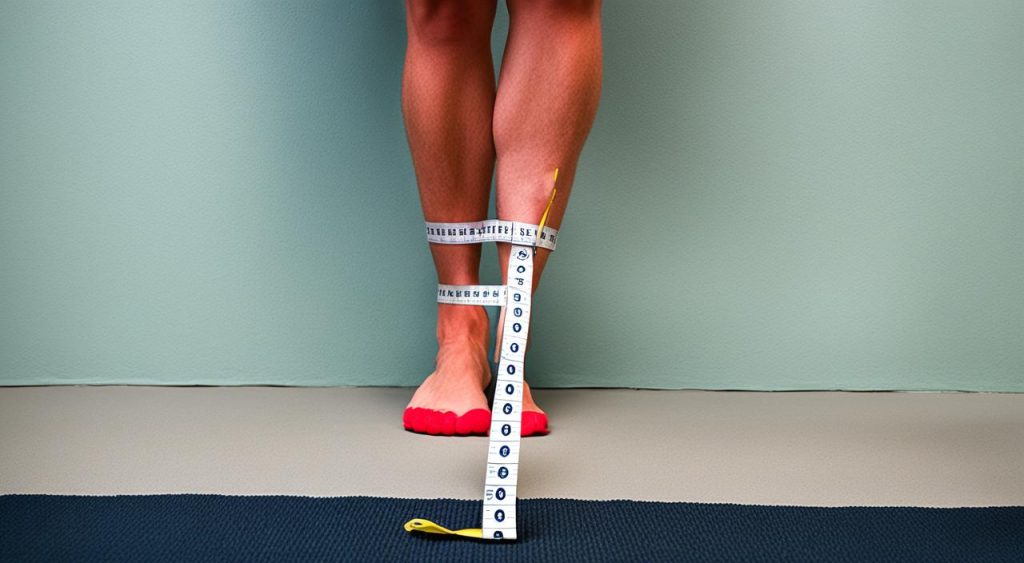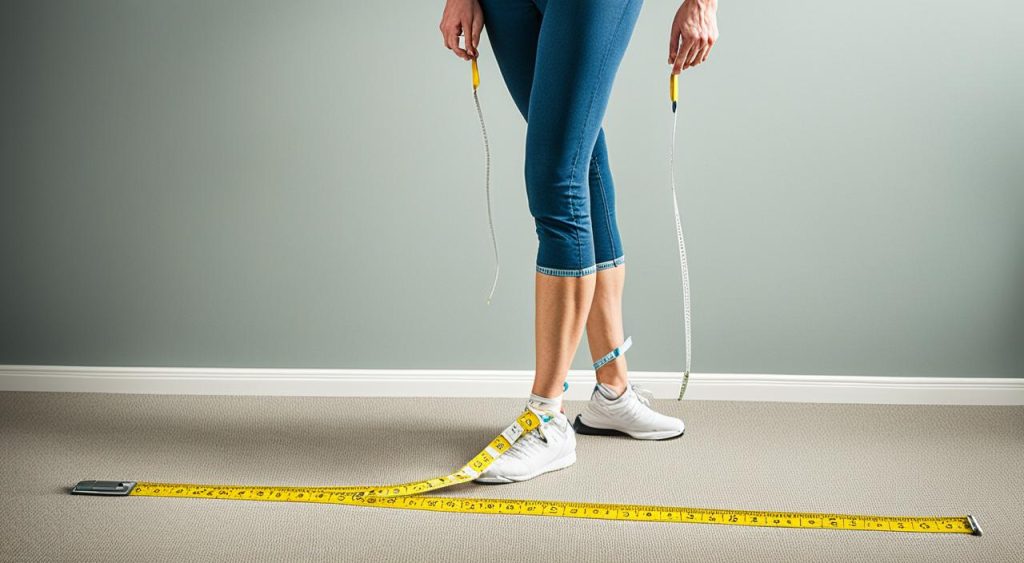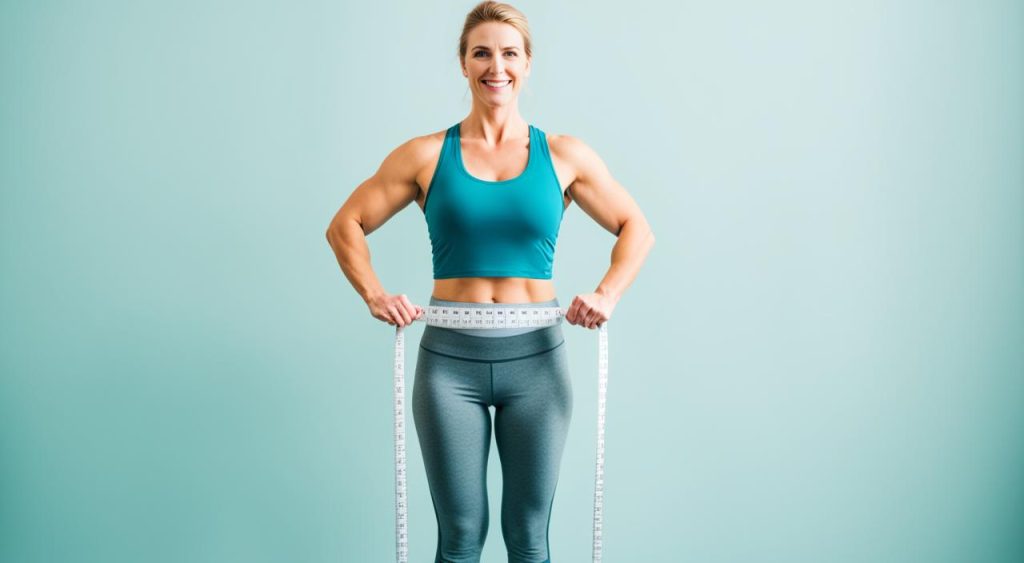Are you tired of ill-fitting pants that leave you feeling uncomfortable and self-conscious? The secret to achieving the perfect pant fit lies in accurately measuring your inseam. But do you know the proper techniques for determining your ideal inseam length? This comprehensive guide will walk you through the step-by-step process of accurately measuring your inseam to ensure a flattering and comfortable fit for your pants, jeans, or shorts.
Whether you’re shopping for new clothing or tailoring existing pieces, understanding how to properly measure your inseam is crucial for achieving a comfortable and stylish look. In this article, we’ll cover the importance of accurate inseam measurement, the necessary tools and techniques, common mistakes to avoid, and tips for finding your ideal inseam length. By the end of this guide, you’ll be equipped with the knowledge to ensure a perfect fit every time.

Key Takeaways
- Accurately measuring your inseam is essential for finding pants that fit perfectly.
- The right tools and measuring techniques can help you achieve a reliable inseam measurement.
- Understanding common mistakes and how to avoid them will ensure a precise inseam measurement.
- Determining the ideal inseam length for your body type and personal style preferences can enhance your overall look.
- Familiarizing yourself with inseam measurement units and conversion methods can simplify the shopping process.
Ready to take the guesswork out of finding the perfect-fitting pants? Let’s dive into the world of inseam measurement and unlock the secrets to a flawless fit.
Understanding the Importance of Proper Inseam Measurement
Measuring your inseam correctly is essential for finding pants that fit you perfectly. The inseam is the distance from the crotch to the desired length of your pant leg, and an accurate measurement ensures that the pants will sit at the proper height and length on your body. Well-fitting pants not only look more flattering, but they also provide greater comfort and mobility throughout your day.
Why Accurate Inseam Length Matters
Getting the inseam measurement right is crucial for achieving a comfortable and stylish fit. An inaccurate inseam can result in pants that are either too long or too short, leading to an unbalanced appearance and potential discomfort. Proper inseam length is especially important for petite or tall individuals, as it can make a significant difference in the overall look and feel of the garment.
Benefits of Well-Fitting Pants
When you find pants with the perfect inseam length, the benefits are numerous. Well-fitting pants can enhance your silhouette, creating a more flattering and proportionate look. Additionally, properly sized pants provide improved mobility and comfort, allowing you to move freely throughout your day without feeling restricted or self-conscious. Achieving the ideal inseam length is a game-changer for your overall style and confidence.
| Benefit | Description |
|---|---|
| Flattering Appearance | Well-fitting pants with the correct inseam length can create a more proportionate and streamlined silhouette, enhancing your overall look. |
| Improved Comfort | Pants with the right inseam provide greater mobility and comfort, allowing you to move freely without feeling restricted or awkward. |
| Increased Confidence | Wearing pants that fit perfectly can boost your confidence and self-esteem, as you feel more comfortable and stylish in your attire. |
Preparing for Inseam Measurement
Before you can start accurately measuring your inseam, it’s crucial to have the right tools and a suitable measuring surface. By taking the time to properly prepare, you’ll be able to obtain reliable and consistent inseam measurements that will ensure a perfect fit for your pants, jeans, or shorts.
Gathering the Right Tools
The primary tool you’ll need for inseam measurement techniques is a flexible measuring tape. Look for a tape that is made of a durable, non-stretching material, such as fiberglass or metal. Avoid using a standard ruler, as it may not be able to accurately measure the contours of your leg. Additionally, having a pen and paper on hand can be useful for recording your measurements.
Finding a Suitable Measuring Surface
To ensure proper inseam sizing, you’ll want to find a flat, even surface to stand on while taking your measurements. A hard floor, such as tile or hardwood, is ideal. Avoid carpeted or uneven surfaces, as they can interfere with the accuracy of your inseam measuring tips. If possible, stand against a wall or sturdy piece of furniture for added stability and support.
By taking the time to gather the necessary tools and find a suitable measuring surface, you’ll be well on your way to obtaining accurate inseam measuring results. Following these simple preparation steps will help you achieve the perfect fit for your pants, jeans, or shorts.
Step-by-Step Guide to Measuring Inseam
Accurately measuring your inseam is crucial for achieving a perfect fit for your pants, jeans, or shorts. By following this detailed, step-by-step guide, you’ll be able to obtain a precise inseam measurement that will ensure your garments sit at the proper height and length on your body.
Positioning Yourself Correctly
Begin by standing upright on a flat, even surface, such as a hard floor or a sturdy table. Keep your feet shoulder-width apart and your weight evenly distributed. Avoid wearing shoes, as this can affect the accuracy of your measurement.
Locating the Crotch Point
Identify the crotch point, which is the intersection between the top of your thigh and your crotch. This is the starting point for your inseam measurement. You can locate the crotch point by gently placing your hand in the area and slightly adjusting your stance until you feel the correct spot.
Measuring from Crotch to Desired Length
Using a flexible measuring tape, measure from the crotch point down the inside of your leg to the desired pant length. This is typically the length you prefer your pants, jeans, or shorts to fall. Be sure to hold the tape measure snugly against your leg, but not too tightly, to ensure an accurate reading.
By following these steps, you’ll be able to determine your precise inseam measurement, which is essential for how to measure inseam, measure pants inseam, fitting pants inseam, and determine ideal inseam. With this information, you can confidently shop for or tailor your garments to achieve a perfect fit that flatters your unique body shape and personal style.
Common Inseam Measurement Mistakes to Avoid
Accurately measuring your inseam can be a challenging task, and there are several common mistakes that can lead to an inaccurate measurement. By being aware of these potential pitfalls, you can ensure a more precise and reliable inseam measurement, helping you find the perfect-fitting pants, jeans, or shorts.
One of the most common mistakes is improper positioning during the measurement process. Failing to stand up straight or keeping your feet too close together can skew the results. It’s important to stand with your feet shoulder-width apart and maintain good posture to ensure an accurate reading.
Another frequent error is not locating the crotch point correctly. The crotch point is the starting point for your inseam measurement, so if you don’t identify it properly, your entire measurement will be off. Take the time to carefully find the crease where your legs meet your torso to ensure an accurate starting point.
Finally, many people make the mistake of not measuring to the desired length. Whether you’re looking for a specific pant length or aiming for your ideal inseam, it’s crucial to measure from the crotch point down to the length you want. Failing to measure to the correct point can result in pants that are too long or too short, compromising the overall fit.
By being mindful of these inseam measuring tips and avoiding these common errors, you’ll be able to obtain a more accurate inseam measurement that will help you achieve the perfect fit for your pants, jeans, or shorts. Remember, taking the time to measure correctly can make all the difference in how your clothing looks and feels.

Inseam Measurement for Different Pant Styles
While the basic principles of how to measure inseam remain the same, the specific techniques may vary depending on the type of pants you’re measuring. In this section, we’ll provide guidance on measuring the inseam for dress pants, jeans, and shorts. By understanding the nuances of each type of garment, you’ll be able to ensure a perfect fit no matter what you’re wearing.
Measuring Inseam for Dress Pants
When measuring the inseam for dress pants, it’s important to ensure that you’re standing in a natural, relaxed position with your feet shoulder-width apart. Locate the crotch point and measure from there down to the desired length, typically the bottom of the pant leg or the preferred break. This will help you achieve the ideal inseam length for a polished, tailored look.
Measuring Inseam for Jeans
Measuring the inseam for jeans follows a similar process, but with a few key differences. Since jeans are often worn with a slightly more casual style, you may want to consider a slightly longer inseam to accommodate your desired fit and desired look. Remember to measure from the crotch point down to the desired length, taking into account any potential shrinkage that may occur with washing and drying.
Measuring Inseam for Shorts
When it comes to measuring the inseam for shorts, the process is slightly different. Since shorts are typically worn at a higher point on the leg, you’ll want to measure from the crotch point up to the desired length, rather than down to the bottom of the leg. This will ensure that your shorts fit comfortably and flatteringly, allowing you to move freely while achieving the perfect fit.
How to Measure Inseam
Achieving an accurate inseam measurement can be challenging, especially for those with unique body types or proportions. In this section, we’ll discuss strategies for ensuring your inseam measurement techniques are as precise as possible, including tips for dealing with factors like height, weight, and body shape. By following these inseam measuring tips, you’ll be able to obtain a reliable inseam measurement that will help you find the perfect-fitting pants.
Ensuring Accurate Measurements
To obtain the most accurate inseam measuring, it’s crucial to follow a consistent and thorough process. Begin by standing on a flat, level surface and having a friend or family member assist you. Ensure that the measuring tape is held taut and level, running from the top of your inner thigh (your crotch point) to the desired length of your pant leg. Pay close attention to the proper inseam sizing and make adjustments as needed to achieve the most accurate inseam measurement.
Dealing with Challenging Body Types
If you have a unique body type, such as being taller or shorter than average, finding the perfect inseam can be more challenging. For individuals with longer or shorter legs, it’s essential to adjust your measuring technique accordingly. When measuring a taller person, you may need to use a longer measuring tape or have the assistant hold the tape at a higher point on your leg. Conversely, for those with shorter legs, be sure to measure from the appropriate crotch point and keep the tape parallel to the floor to ensure an accurate inseam measurement.

By incorporating these strategies into your inseam measuring tips, you’ll be well on your way to achieving the proper inseam sizing and finding pants that provide a comfortable and flattering fit.
Determining the Ideal Inseam Length
Once you’ve measured your inseam, the next step is to determine the ideal length for your pants, jeans, or shorts. This process involves considering several factors to ensure you achieve a flattering and comfortable fit that complements your unique body type.
Factors to Consider
When selecting the perfect inseam length, it’s important to take into account your height, leg proportions, and the style of pants you’ll be wearing. Taller individuals may require a longer inseam, while those with shorter legs may need a shorter length. Additionally, the cut and silhouette of the pant can also influence the ideal inseam measurement.
Personal Preferences and Style
Beyond the practical considerations, your personal style preferences will also play a role in determining the ideal inseam length. Some individuals may prefer a longer, more tailored look, while others may opt for a shorter, more casual aesthetic. Experimenting with different inseam lengths can help you discover the ideal inseam that not only fits your body well but also aligns with your personal fashion sense.
By taking the time to carefully consider these factors, you’ll be able to find the perfect inseam length that will ensure a flattering and comfortable fit for your pants, jeans, or shorts. This attention to detail will help you achieve a polished, well-proportioned look that accentuates your best features.
Converting Inseam Measurements
When it comes to finding the perfect-fitting pants, understanding the different measurement units used for inseam is crucial. Inseam lengths can be expressed in either inches or centimeters, and being able to convert between these units will help you communicate your measurements accurately, whether you’re shopping in-store or online.
Understanding Measurement Units
The inseam of a pair of pants is typically measured in either inches or centimeters, depending on the region or brand. In the United States, the standard unit of measurement for inseam is inches, while many other countries use the metric system and measure inseam in centimeters. Familiarizing yourself with both units will ensure you can provide the correct information when measuring your pants inseam or searching for the ideal inseam length guide.
Converting Between Inches and Centimeters
To convert your inseam measurements from inches to centimeters, simply multiply the inch value by 2.54. For example, if your inseam is 32 inches, the equivalent measurement in centimeters would be 81.28 cm (32 inches x 2.54). Conversely, to convert from centimeters to inches, divide the centimeter value by 2.54. If your inseam is 82 cm, the equivalent in inches would be 32.28 inches (82 cm / 2.54).
Mastering the conversion between these two measurement units will empower you to accurately fit your pants and ensure a comfortable, flattering look, no matter where you’re shopping or what brand you’re considering.
